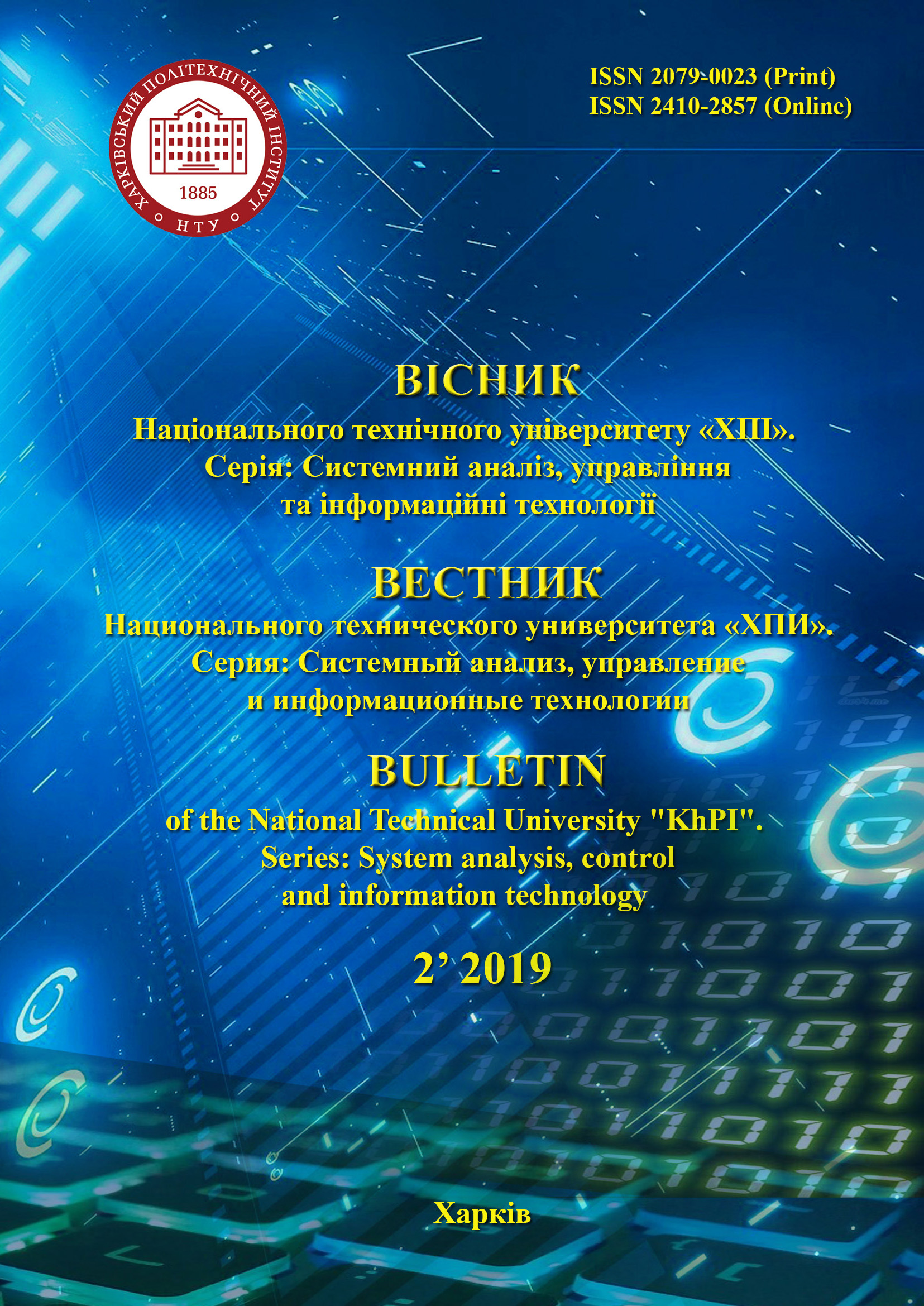ANALYSIS OF INFORMATION IN NEUROMORPHIC INFORMATION MODELS OF NEURONS
DOI:
https://doi.org/10.20998/2079-0023.2019.02.10Keywords:
detector neural network, neuron-detector, neuron-analyzer, neuromorphic model of a neuron, artificial neural network, artificial intelligenceAbstract
The article discusses the systemic principle of constructing of detector artificial neural networks (DNN). This principle is based on the determination and detection of structural elements of recognizable patterns, as well as their non-derivative and derivative characteristics. Non-derivative structural elements, as well as their qualitative and quantitative characteristics, are determined empirically. These elements and their characteristics are detected by specific neurons-detectors of the DNN at the stage of sensory perception. The process of detecting of non-derivative structural elements is based on the discovery by David Hubel and Torsten Wiesel of the selective response of neurons in the primary visual cortex to certain stimuli. However, non-derivative structural elements and their characteristics are not enough to solve the problem of image classification. This is due to the fact that in the process of training of a neuron-detector of a class of images, information is lost that does not contain stable classification features. This loss of information reflects the generalizing ability of the DNN and leads to a decrease in its resolution. To increase the resolution of the DNN, additional information is needed. This information can be obtained as a result of the formation of derived characteristics of the structural elements of a recognizable image. The formation of derived characteristics reflects the process of information analysis, which is carried out by neurons-analyzers of the DNN. According to the authors, these neurons-analyzers are information models of biological neurons-analyzers. Then the process of information synthesis is implemented by the single derivatives neurons-detectors of the DNN. These neurons-detectors respond to whole images. The construction of information models of neurons is based on the hypotheses of the neural code put forward by the authors, which explain the information essence of the reactions of neurons.
References
Parzhin Y. V. Detektornyj princip postroenija iskusstvennyh nejronnih setej kak al'ternativa konnekcionistskoj paradigme [Detector principle of constructing artificial neural networks as an alternative to the connectionist paradigm]. Systemy upravlinnja, navigacii' ta zv’jazku: zb. nauk. pr. [Management, navigation and communication systems: a collection of scientific papers]. Poltava: Poltavs'kyj nacional'nyj universytet imeni Jurija Kondratjuka Publ., 2017, issue. 4 (44), pp. 80–101.
Hubel D. H. Eye, Brain and Vision. Scientific American Library a Division of HPHLP New York, 1988. 256 p.
Klatzky R. L. Human Memory: Structures and Processes. W H Freeman & Co; 2nd edition. 1980. 358 p.
Pribram K. Languages of the brain; experimental paradoxes and principles in neuropsychology. Englewood Cliffs, N.J., Prentice-Hall. 1971. 432 p.
Sokolov E. N. Ocherki po psihofiziologii soznanija. Chast' 1. Sfericheskaja model' kognitivnyh processov. Glava 2. Ot karty detektorov – k karte pamjati i karte semanticheskih edinic [Essays on the psychophysiology of consciousness. Part 1. Spherical model of cognitive processes. Chapter 2. From the map of detectors to the memory card and the map of semantic units] Vestnik Moskovskogo universiteta [Bulletin of the Moscow University]. Moscow: MGU Publ., 2019, series 14, Psihologij, no. 3, pp. 3–27.
Haykin S. Neural Networks and Learning Machines. Pearson, 3 edition, 2008. 936 p.
Parzhin Y. Principles of modal and vector theory of formal intelligence systems. URL: arXiv:1302.1334v1; CoRR abs/1302.1334 (accessed 30.09.2019).
Edelman G. M., Mountcastle V. B. The mindful brain. Cortical Organization and the Group-Selective Theory of Higher Brain Function. The MIT Press. 1978. 135 p.
Danilova N. N. Psihofiziologija: uchebnik dlja vuzov [Psychophysiology: a textbook for universities] Moscow: Aspekt Press Publ., 2004. 368 p.
Zeki S. The construction of colours by the cerebral cortex. Proc. Roy. Inst. Gt. Britain 56, 1984, pp. 231–257.
Erickson R. P. Stimulus coding in topographic and non-topographic efferent modalities: On the significance of the activity of individual sensory neurons. Psychol. Rev. Publ., 1968, issue. 75 (6), pp. 447–465.
Zhukov V. V., Ponomareva E. V. Fiziologija nervnoj sistemy: uchebnoe posobie [Physiology of the nervous system: a training manual] Kaliningrad: Kaliningradskij universitet Publ., 1999. 64 p.
Downloads
Published
How to Cite
Issue
Section
License
Copyright (c) 2019 Bulletin of National Technical University "KhPI". Series: System Analysis, Control and Information TechnologiesAuthors who publish with this journal agree to the following terms:
- Authors retain copyright and grant the journal right of first publication with the work simultaneously licensed under a Creative Commons Attribution License that allows others to share the work with an acknowledgement of the work's authorship and initial publication in this journal.
- Authors are able to enter into separate, additional contractual arrangements for the non-exclusive distribution of the journal's published version of the work (e.g., post it to an institutional repository or publish it in a book), with an acknowledgement of its initial publication in this journal.
- Authors are permitted and encouraged to post their work online (e.g., in institutional repositories or on their website) prior to and during the submission process, as it can lead to productive exchanges, as well as earlier and greater citation of published work (See The Effect of Open Access).


